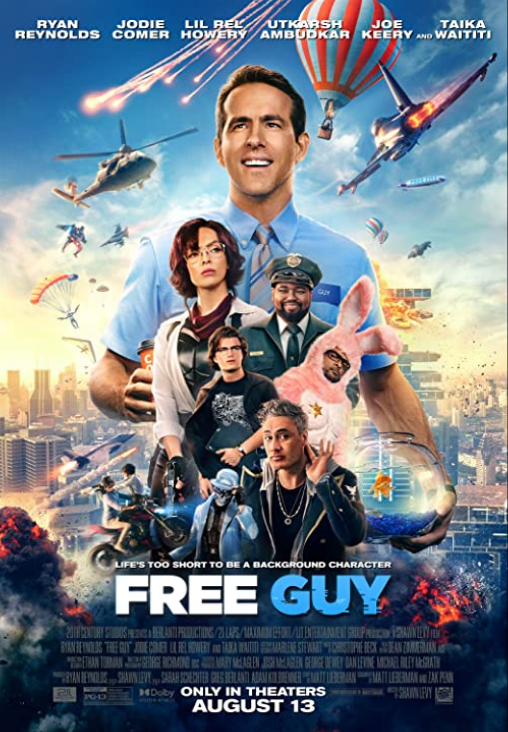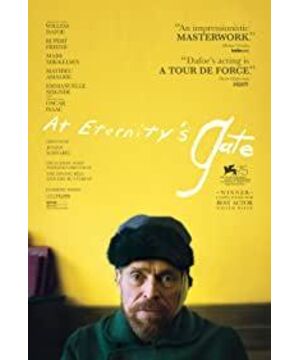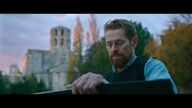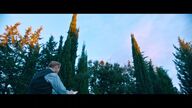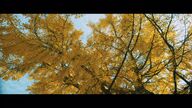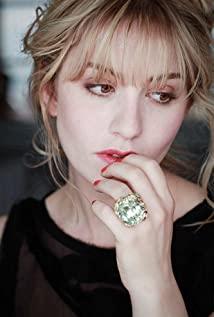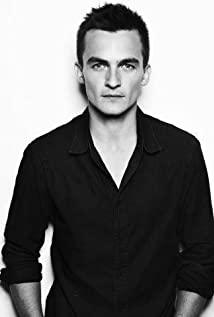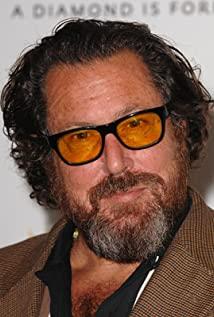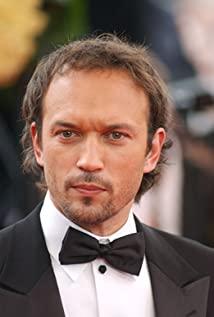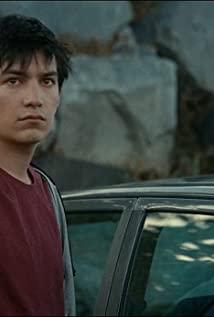"At Eternity's Gate" is full of director Julian Schnabel's very strong stylized images, from unfettered hand-held photography to wide-angle lenses, filters, black-screen monologues, piano soundtracks and more. Obviously, the director is not shooting a regular Van Gogh biopic, but through fragmentary fragments of his creation and life, allowing the audience to gradually enter the world of Van Gogh's thoughts. However, these unique styles appear to be overwhelming and insignificant to the audience. Stylized audiovisual methods such as using monologues to speak inner words after a black screen, filters showing blurred images in front of him, etc., can indeed vividly and effectively present his isolated and unintelligible personality, but it is difficult to communicate effectively with the audience. Just as Van Gogh's mental state gradually became incompatible with the outside world and was not accepted by mainstream audiences and the market. However, from a purely visual perspective, the film is very beautiful. Because the director himself is a painter, the pictures of the entire film are like cuts of oil paintings. Dark blue and warm yellow are also Van Gogh's basic tones. Many shots of Van Gogh's painting process are depicted in the picture, which fully demonstrates his unique creative style: nature themes, rushing style, and heavy paint. The footage of the film captures the ground, green grass, leaves and tree roots. The most eye-catching picture is a field of sunflowers.
"At Eternity's Gate" is probably the last stop of Van Gogh's life that wants to restore Van Gogh's life through images, and even more wants to capture Van Gogh's artistic creativity through audiovisual. The first goal was well achieved, but the film went wrong in the process of achieving the second goal. Van Gogh’s creative process is presented in lengthy MV-style images, with a continuous stream of terrible and repetitive piano music, and the hand-held lens constantly wanders around Van Gogh under the scorching sun, directly causing the film to overflow and be lyrical and unrestrained. At the same time, many attempts have been made to gain insight into the world in Van Gogh's eyes through subjective lenses, but although the technique is extremely stylized, it is particularly low-end. What’s worse is that every actor’s cameo ran to the camera like a dragon, shook a few lines and then disappeared, like a "foundation of a country"-style star stacking. Fortunately, William James Dafoe, who was the lead actor, used acting skills. Supported the whole film.
"At Eternity's Gate" did not give insight into the essence of the painter Van Gogh's life. The film showed his infinite suffering, but did not really penetrate into the soul of the character. Of course, the actor William James Dafoe still used his acting skills to interpret this painter who combines madness and reason. Regardless of the level of measurement, "At Eternity's Gate" is a crude and extremely unbalanced movie-original and deliberately unrefined style, shaky hand-held camera and wide-angle lens, these lenses reflect uneasy mood, but It doesn't make sense. The soundtrack of the film is also not very harmonious. The notes it strikes are like an old bar piano that needs to be tuned. For most of the film, the director symbolically switched between French and English, which was extremely clumsy. Most observers think that the tactile density of Van Gogh’s paintings is clumsy and inelegant, but director Julian Schnabel unearthed a visual and tonal connection in the film, giving this unique biographical a kind of Exciting rough vitality.
